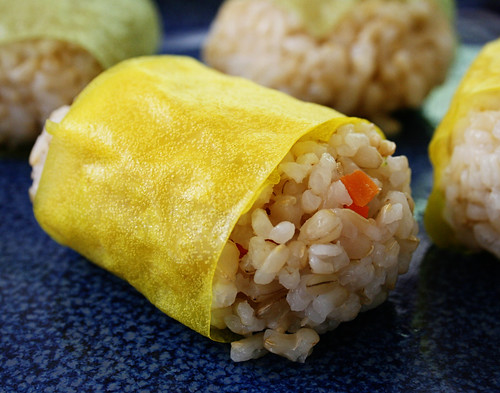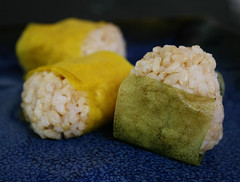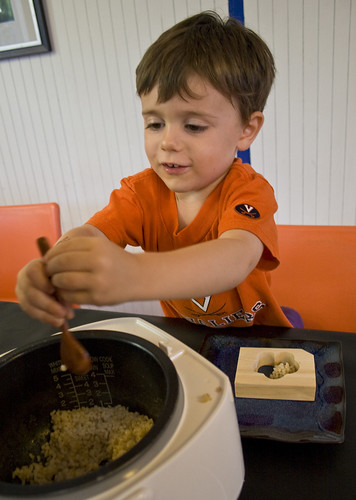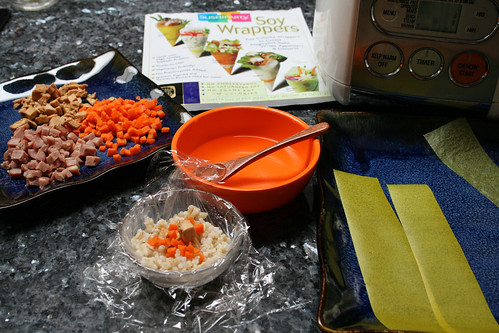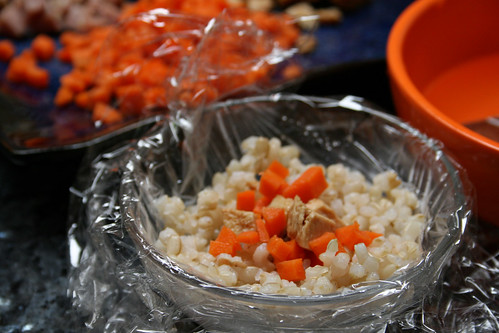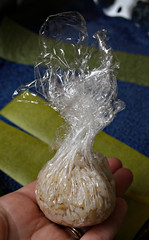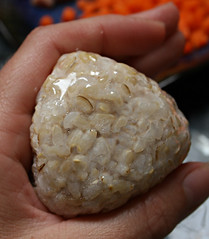As parents who are passionate about food, we want our kids to eat at school as well as they do at home, and making that happen is not always a piece of ... ahem ... birthday cake.
Below, we offer some food for thought and an abundance of ideas to help inspire creative, fun lunches.
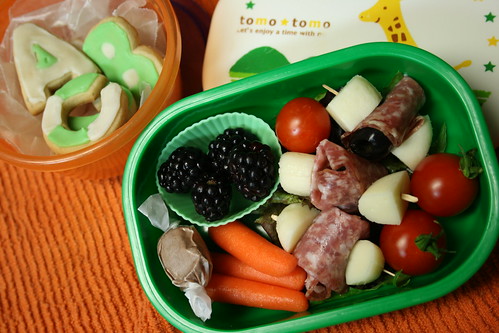 |
| First day of school lunch: ABC cookies, blackberries, cherry tomatoes, carrots, a piece of taffy, and skewers with salami, cheese, and olives. |
Understand that we are in a competition
Packing your child's lunch isn't just about providing nutritious food to fuel him for a full day of school.
It's a strategic, competitive process. Give some thought to what principles you'll fall on your sword for, and what you're willing to concede.
Darienne's concession: I always include something my son will see as a treat, something school doesn't sell and the other kids don't have. It could be
a piece of salt-water taffy or a tiny container of balsamic vinegar and olive oil for dipping bread.
Anna's idea: My older boy starts to have lunch just in November, so we are working on a monthly menu with pictures and options. The idea behind it is to
give the almost-6-year-old the power to choose. One day of the week he can choose "Mystery Lunch" to be surprised.
Ask questions
Ask your child about her lunch after school.
What did you like? What didn't you like? Why didn't you eat the pickle? I thought you loved pickles! What did other kids have?
Many kids complain they don't have enough time to eat.
Make sure everything is easy to get to -- clementines are peeled, for example, and extra packaging is minimal. Perhaps use a small reusable container for milk or water. When Darienne sends juice, she packs a box because her son can't always find an adult to help with the trickier juice pouch.
Anna also plans to send juice boxes. Because her family is reducing juice to once a day, he knows the box is to be enjoyed with his lunch -- taking advantage of that fact that he is very hungry at school and a box of juice won't ruin his appetite.
When your child gushes about someone else's lunch,
steal some good ideas or have a conversation about food. Avoid disparaging a classmate's junk food, but do
have a positive conversation about how the food in your child's lunch bag helps her grow and become strong.
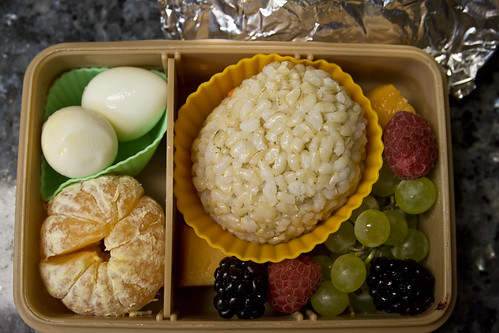 |
| Tiny food: Quail eggs, a clementine, onigiri, blackberries, melon, raspberries and champagne grapes. |
Think small
Small bits of food are quick to eat, and
they allow more room for variety. When Darienne packs a full-size sandwich and an apple, she typically sees both come back home nearly untouched. If she packs several tiny things, nearly everything gets devoured, or at least sampled.
Asian markets and stores are great resources for small, packaged foods and containers to put it all in.
One idea is to study some small plates dishes and finds which ones are your kid's favorite flavors and textures.
Allow some fun
Buying lunch at school is a Very Big Deal for a young child.
Letting kids buy lunch -- maybe once or twice a week -- might make them more agreeable to home-packed meals the rest of the week.
Give them something to smile about. Darienne's first-grader was excited to show off polka-dot fruit roll-ups, which he is proud to have inspired over at
Fix Me A Snack. Make all the food the same color,
draw a funny face on a marshmallow with a food coloring marker, or tuck in a sticker. Your kid will love it.
What to pack?
A few ideas to get you started:
- stir-fried tofu cubes
- meatballs (Aidell's and Trader Joe's varieties are good choices)
- mini chicken sausages (again, Aidell's makes some tasty ones)
- pot stickers
- onigiri
- small pasta shapes lightly dressed with olive oil and parmesan cheese or pesto
- hard-cooked eggs (try quail eggs, available in Asian markets)
- beans dressed with a little vinaigrette or lemon juice
- small salad with a lemon wedge
- food easy to serve with toothpicks, such as slices of sausages, veggies and cheese cubes (use round-tip toothpicks for reusable blunt skewers, available at Asian markets, if you're worried about pointy objects)
- small plates favorites
- savory muffins
- bread with a bit of tapenade, bean spread, or jam
- mini meatloaf
- mini pita bread sandwiches
- grown-up food, such as olives and gherkins
- pretzels
- crudités: carrots, jicama, snap peas, edamame, celery, cherry tomatoes, sweet pepper
- coleslaw or grated carrot salad
- small, whole fruit: apples, berries, plums, clementine, grapes (champagne grapes are fun), baby bananas
- melon wedges
- applesauce
- dried fruit, including raisins, apricots, mango, prunes, roll-ups and strips, etc. For variety, look for less-common options, like banana chips and dried hibiscus flowers.
- a marshmallow
- a fortune cookie
- a graham cracker spread with jam or Nutella
- a "raw" s'more
What are some of your favorite foods to pack?
 This is the kind of fully packed snack that is perfect for a fast bite at school break. It's MKA (my kids approved) although they usually don't care so much for raisins, flax seed or oats. But in this case they are all inside a wonderful crunchy and chocolate-chip cookie, and so, it is another story...
This is the kind of fully packed snack that is perfect for a fast bite at school break. It's MKA (my kids approved) although they usually don't care so much for raisins, flax seed or oats. But in this case they are all inside a wonderful crunchy and chocolate-chip cookie, and so, it is another story... 1/2 cup canola or another vegetable oil
1/2 cup canola or another vegetable oil

































